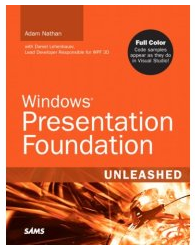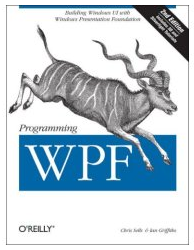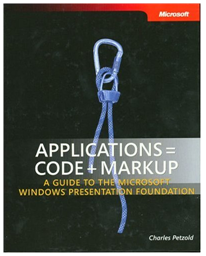I apologize for my absence. Between the Christmas holiday and the wedding planning, I’ve been remiss on continuing work on this blog. In fact, it was only today that I noticed I had new comments.
I’ll be getting to the questions in the comments in the coming week, but for right now, I want to throw up a post on good WPF/C# books that I’ve used. They are listed in the order that I would reccomend you purchase them.
Windows Presentation Foundation Unleashed (SAMS)
Adam Nathan
What it is: This is the classic… the one that everyone is using. It walks through the big WPF topics easily and in a clear manner. I constantly refer back to it for the basics on dependancy properties, routed events and custom controls. It has some great examples and flows well between the XAML and the C#
What it is not: It is not a guide to the controls. Nathan covers some of the basic controls quickly, but without the depth I find that I need in order to do my design work. This is a great book if you’re just dipping your foot into the coding side of WPF and fitting that into your Designs.
Programming WPF (O’Reilly)
Chris Sells and Ian Griffiths
What it is: I gotta admit, I went out on a limb with this because the first edition of this was note very good at all. However, they really got things together with the second edition. This is a little more in depth stuff on WPF, better on the data binding than WPF Unleashed (including a whole chapter on data binding to lists). It also has a little more detail on the controls that the above.
What it is not: This is not the greatest starter book for WPF. It’s better as a reference and for learning new things once you have the basics down. Also, while it goes into a little more detail on the controls, it still doesn’t really dig into them in the way that I wish it would.
Applications = Code + Markup: A Guide to the Microsoft Windows Presentation Foundation
Charles Petzold
What it is: One of the better earlier books on WPF and probably my favorite code-heavy one. I used it as my reference before the O’Reilly book came out. It has some really good in-depth C# examples throughout the book and hits some of the code-behind topics well.
What it is not: If you’re a designer and would like to stay away from the code-behind, this is not the book for you. Very few XAML examples and can be tough to slog through.
Alright, I’ll be hitting the listview headers the rest of this week and the listview items in the coming week, so stay tuned.


